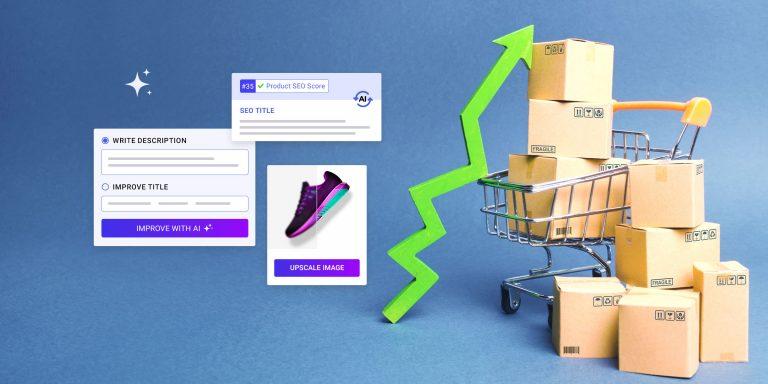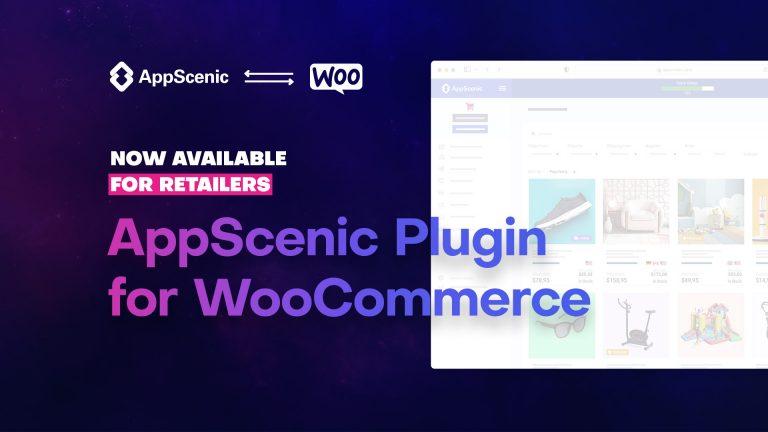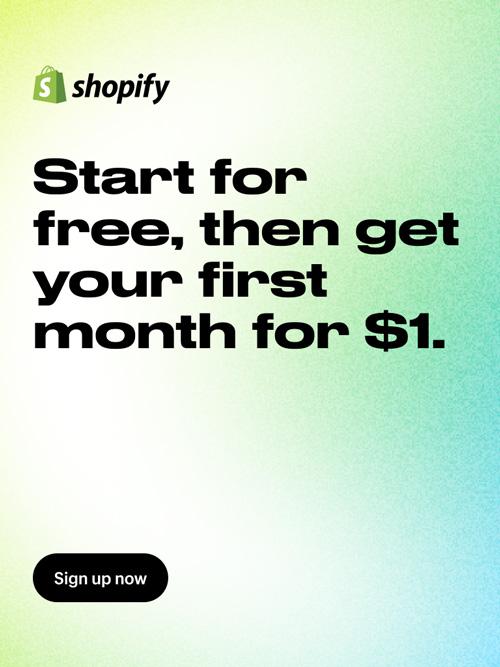In the highly competitive ecommerce world, where countless brands compete for attention, one-size-fits-all approaches no longer cut it. More and more consumers look for personalized, unique experiences that make them feel valued and seen.
Personalization has transformed from a “nice-to-have” into a vital component of any successful dropshipping strategy. By integrating customized approaches into your dropshipping store, you can not only stand out but also build lasting customer loyalty.
Here’s how personalization can transform your dropshipping business and why it’s essential for success.
Table of Contents
Why personalization matters in dropshipping
Think about it—when was the last time you purchased from a brand that made you feel truly understood? The power of personalization lies in its ability to connect on a deeper level. By tailoring the shopping experience to individual preferences, you create a sense of belonging and trust, two factors that drive conversions and repeat purchases.
Modern consumers expect more than generic marketing messages. According to the Personalization Pulse Check Report, 58% of consumers feel frustrated when brands deliver generic and inconsistent communication. Shoppers want to feel seen, heard, and valued. Personalization fulfills this need by tailoring every interaction, creating a deeper connection with the customer.
How to implement personalization in dropshipping
1. Leverage data to understand your customers
Data is the foundation of personalization. With tools like Google Analytics, Shopify’s customer insights, Semrush and social media tracking, you can gather valuable information about your customers’ preferences, behavior, and purchasing patterns.
Use this data to:
- Segment your audience based on factors like demographics, interests, and shopping habits.
- Create targeted email campaigns with product recommendations tailored to their preferences.
- Design ads that speak directly to their needs and desires.
For example, if a customer frequently buys pet products, send them exclusive deals on pet supplies, tips and tricks on how to use them, or highlight trending items in that niche. Data-driven personalization ensures every interaction feels relevant.
2. Customize product recommendations
Amazon didn’t become a giant in ecommerce by accident. One of their strongest strategies is personalized product recommendations. As a dropshipper, you can replicate this by using AI-driven tools to showcase items your customers are likely to love.
How?
- Add a “You May Also Like” section to your product pages.
- Use retargeting ads to remind customers of items they’ve browsed or left in their cart.
- Offer bundles that complement past purchases (e.g., pairing yoga mats with water bottles).
This approach not only increases average order value but also shows customers that you’re paying attention to their preferences.
3. Personalize the shopping journey
The journey from discovery to purchase should feel seamless and tailored. Here are a few ways to make it happen:
- Dynamic landing pages: Use landing pages that change based on the customer’s location, search terms, or shopping history. For instance, a customer in Canada might see products suited for colder climates, while someone in California gets summer-ready options.
- Custom welcome messages: Greet customers with personalized messages when they visit your store, such as “Welcome back, Sarah! Here’s what’s new in skincare.”
- Abandoned cart recovery emails: Don’t just send generic reminders. Personalize these emails with the product they left behind and offer a discount or free shipping to entice them back.

4. Offer customization options
One way to enhance the customer experience is by allowing them to personalize the products themselves. Print-on-demand services are excellent for this, enabling customers to design their own T-shirts, mugs, or phone cases.
Even in traditional dropshipping, you can collaborate with suppliers to add personalized touches like engraving or custom packaging. Imagine how much more memorable a gift feels when it arrives with a handwritten note or the recipient’s name on the item. These small gestures can lead to big rewards in customer loyalty.
The role of technology in personalization
Advanced technology makes personalization scalable for dropshippers. Here are some tools and platforms to consider:
- AI-powered chatbots: Use chatbots to offer instant, personalized recommendations and support. For instance, a chatbot could ask about the customer’s preferences and guide them to suitable products.
- Email automation: Platforms like Klaviyo or Mailchimp allow you to send automated, highly targeted emails based on customer behavior.
- AR and VR integration: Augmented reality (AR) and virtual reality (VR) are becoming popular for personalized shopping. Allow customers to visualize how a product looks in their space, such as furniture in their living room or glasses on their faces.
Read more: Revolutionizing Dropshipping: How New Tech is Changing the Game
Building a brand around personalization
Personalization is about more than just sales, it’s about building a brand that resonates. To create a lasting impression:
- Share your story: Let customers know who you are and what your brand stands for. Storytelling builds emotional connections.
- Engage on social media: Respond to comments, share user-generated content, and host polls or Q&A sessions to make customers feel included.
- Celebrate milestones: Remember birthdays, anniversaries, or loyalty milestones with special discounts or shoutouts. These small acts of recognition go a long way.
Overcoming challenges in personalization
While personalization offers immense benefits, it’s not without challenges:
- Data privacy concerns: Always be transparent about how you use customer data and ensure compliance with privacy regulations like GDPR.
- Balancing automation and authenticity: While automation saves time, it’s important to retain a human touch. Ensure your messaging feels genuine.
- Supplier limitations: Not all suppliers offer customization options. Choose partners who can support your personalized vision.
By addressing these challenges proactively, you can implement a personalization strategy that’s both effective and ethical.
Real-world examples of personalization in action

Old Navy’s smart cross-selling with on-site messaging
Old Navy takes a smart approach to cross-selling by using real-time on-site messaging tailored to a customer’s preferences and behavior. For example, while a customer is shopping for a dress, Old Navy might suggest complementary accessories or shoes that match the item they’re considering.
- Why it works: These recommendations are based on real-time customer behavior and historical shopping data, ensuring they are contextually relevant.
- The impact: Personalized suggestions improve engagement and drive conversions. They also open up cross-selling opportunities, increasing the customer’s average order value (AOV) and lifetime value (LTV).
Amazon’s personalized product recommendations
Amazon sets the gold standard for personalization by offering product recommendations at the perfect time, while a customer is shopping. For example, when a customer adds an item to their cart, Amazon suggests related products frequently bought together.
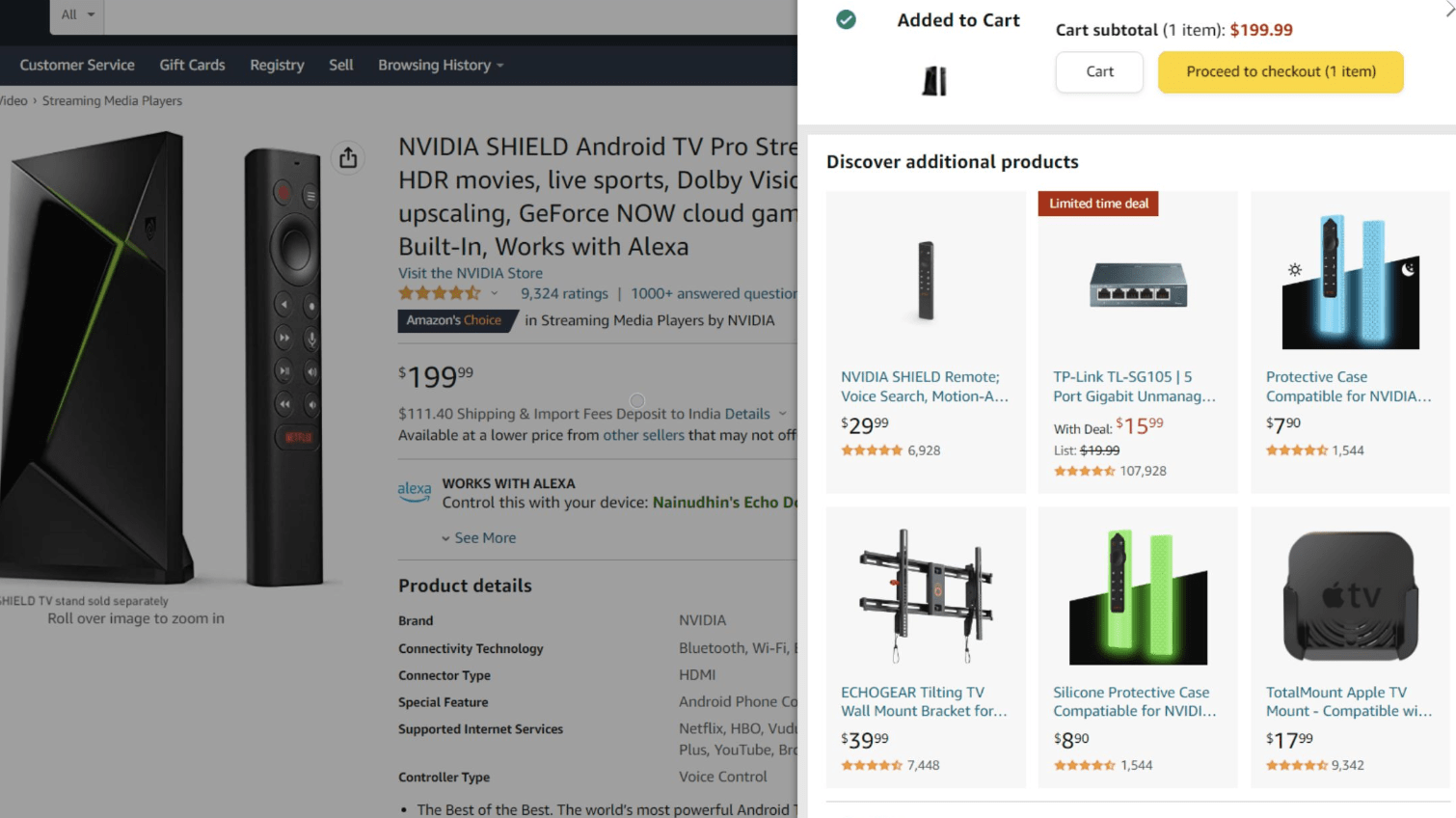
- Why it works: These recommendations are generated in real-time based on customer behavior and purchasing trends among similar shoppers.
- The impact: By showing relevant suggestions, Amazon boosts cross-selling success, extends shopping sessions, and increases AOV.
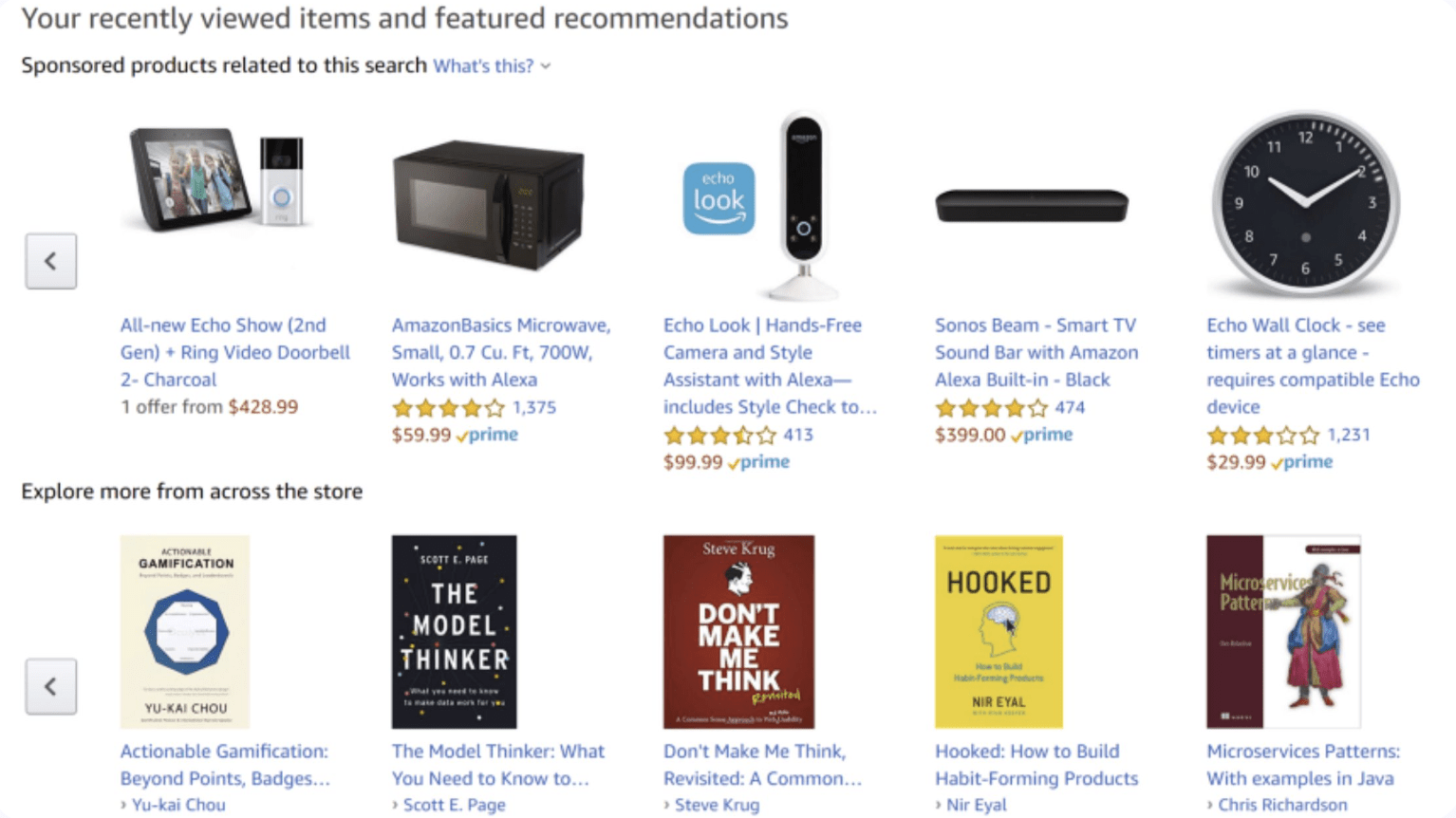
Both examples showcase how real-time, personalized recommendations can enhance the customer experience and lead to significant business growth. These tactics are scalable for dropshipping businesses looking to create tailored shopping journeys. Here’s more on Amazon’s product recommendation system.
Why personalization is the future of dropshipping
The ecommerce landscape is evolving, and consumers expect more than just products, they want unique experiences. Personalization transforms a transactional dropshipping business into a relationship-driven brand. By tailoring every aspect of the shopping journey, you’ll not only increase sales but also build loyalty and advocacy.
Dropshipping may have started as a volume-focused model, but its future lies in creating meaningful connections and powerful storytelling. That’s why, personalization is no longer optional, it’s the key to standing out in a crowded market.
So, are you ready to make it personal? Start transforming your dropshipping business today.



































